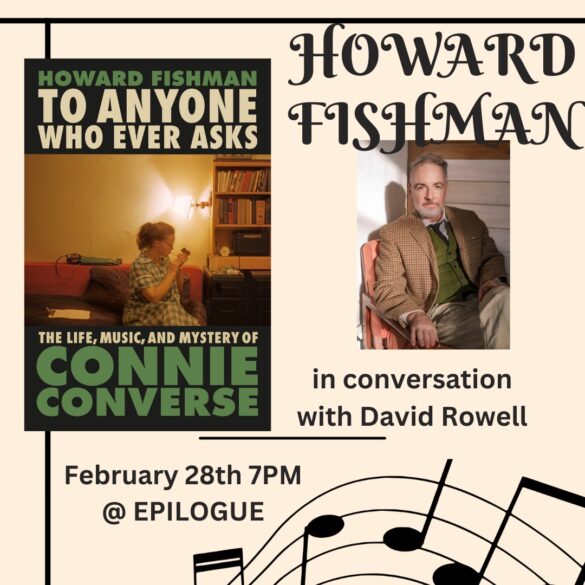To Anyone Who Ever Asks: Howard Fishman in conversation with David Rowell
Join us for a night of great conversation at Epilogue!
About the book:
When musician and New Yorker contributor Howard Fishman first heard Connie Converse’s amateur recordings from the early 1950s by chance at a party, he was convinced she could not be real. Her songs were too good not to know, and too anachronistic to make sense. Converse seemed to bridge the gap between traditional Americana (country, blues, folk, jazz, and gospel), the Great American Songbook, classical art song, and the singer-songwriter movement spurred on by Bob Dylan and Joni Mitchell—but she was doing it a decade before those figures arrived.
Mesmerized by her genius, the connection was instant: Fishman needed to know everything there was to know about this enigmatic artist. But there was hardly any public information available. The bizarre legend about Connie Converse that had become the prevailing narrative among those who had also discovered her music was that in 1974, at the age of fifty, she simply drove off one day and was never heard from again. Could this have been true? Who was Connie Converse, really?
Determined to put together the missing pieces of her life and art, Fishman set out to write the Connie Converse story. A dozen years of research, travel to the places she lived, immersion into the voluminous effects she left behind, and hundreds of interviews later (including many with her friends and family members), he gives readers the compelling result in his first ever book: TO ANYONE WHO EVER ASKS: The Life, Music, and Mystery of Connie Converse (Dutton; on sale May 2, 2023).
Approaching Converse’s story as both a fan and a journalist, Fishman expertly weaves together a narrative of her life and music—her New England family, shadowed by secrecy and repression; her upbringing as the precociously gifted middle child of strict, reproving parents; her complicated relationships with her two brothers (one of whom acted as the unofficial archivist of her work); the tragic story of her childhood best friend; Converse’s struggles with depression and as a social misfit; the 1950s Greenwich village arts scene; questions about sexuality; political activism; and forward thinking about race, class, and conflict in America.

